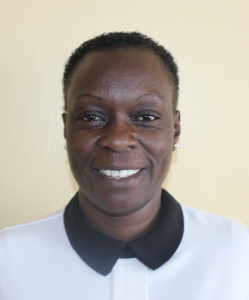Shihalia Primary School was established in 1972 as a community school sponsored by the Church of God. Presently it has 542 pupils, out of which 241 are boys and 301 are girls.
On a normal day, the pupils report to school at 7am. They clean the school compound and then proceed to the morning assembly at 7:30am.
At the assembly, the students participate in a session of praise songs, followed by the sharing of God's word. Prayers are made before announcements by the teachers.
Morning classes start at 8am and last up to 12:30pm. Then the pupils break for an hour to have lunch. Afternoon classes begin at 1:45pm and end at 3:30pm.
Thereafter, they proceed to game time. The day ends at 4:30pm, after the students gather for a final evening assembly.
Water
When it rains the pupils collect water from the roof catchment. When it does not, the pupils carry water from their homes using plastic containers.
Large plastic jerrycans are generally used for gathering water. Some have covers whereas some do not. The gathered water is stored in plastic containers or buckets. The uncovered water from an unsafe source has a high risk of contamination and infecting the students with waterborne diseases.
Sanitation
There are not enough latrines for the school population and it has resulted in pupils wasting a lot of time queuing during break time to go to the bathroom.
The existing latrines are in very bad condition. A good number have broken doors, denying the pupils privacy when answering nature’s call.
Most of the latrines at the school are nearly full. The toilets are smelly and the floors are worn out. The pupils walk on the floors with bare feet, exposing them to infections and injury.
The school has one handwashing facility, in the form of a 5-liter plastic container.

"It is a high time the school got the toilets and water tank or else the school be closed down by the Department of Public Health," Deputy Headteacher Mrs. Eunice Angweye exclaimed. She continued to say that we came at just the right time.
By installing the water tank and latrines at the school, it is expected that the students will have sufficient time to concentrate on their studies. The sanitation and health standards in the school will gradually improve. Consequently, their academic performance will improve tremendously.
Here’s what we’re going to do about it:
Training
Training will be held for two days. The facilitator will use PHAST (participatory hygiene and sanitation transformation), ABCD (asset-based community development), CTC (child to child), lectures, group discussions, and handouts to teach health topics and ways to promote good practices within the school. The CTC method will prepare students to lead other students into healthy habits, as well as kickstart a CTC club for the school.
Handwashing Stations
This CTC club will oversee the new facilities, such as handwashing stations, and make sure they are kept clean and in working condition. The two handwashing stations will be delivered to the school, and the club will fill them with water on a daily basis and make sure there is always a cleaning agent such as soap or ash.
VIP Latrines
Two triple-door latrines will be constructed with local materials that the school will help gather. Three doors will serve the girls while the other three serve the boys. And with a new source of water on school grounds, students and staff should have enough to keep these new latrines clean.
Rainwater Catchment Tank
A 50,000-liter rainwater catchment tank will help alleviate the water crisis at this school. The school will also help gather the needed materials such as sand, rocks, and water from the spring for mixing cement. Once finished, this tank can begin catching rainfall that will be used by the school’s students and staff.
We and the school strongly believe that with this assistance, standards will significantly improve. These higher standards will translate to better academic performance!

 Rainwater Catchment
Rainwater Catchment
 Rehabilitation Project
Rehabilitation Project

































